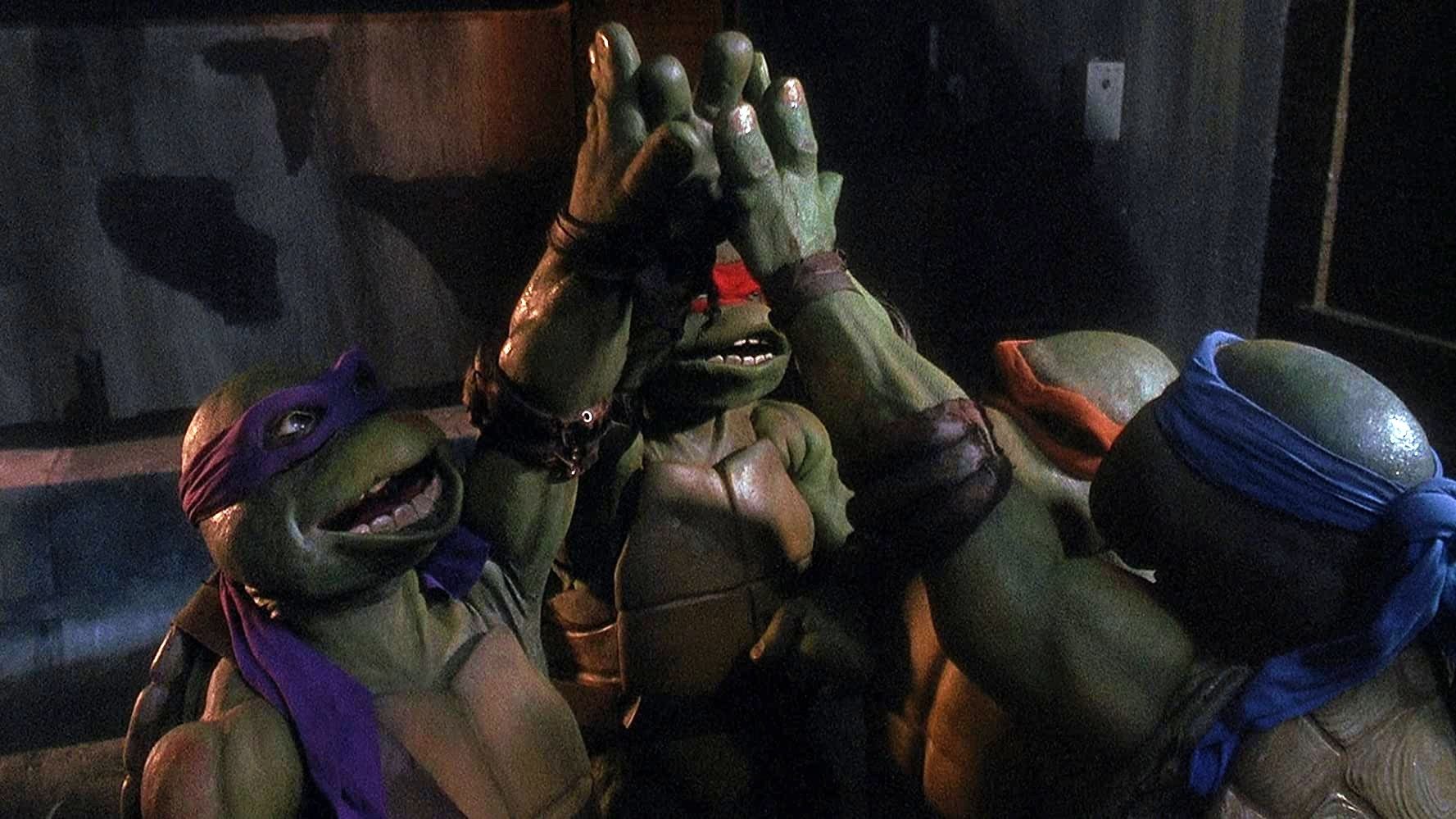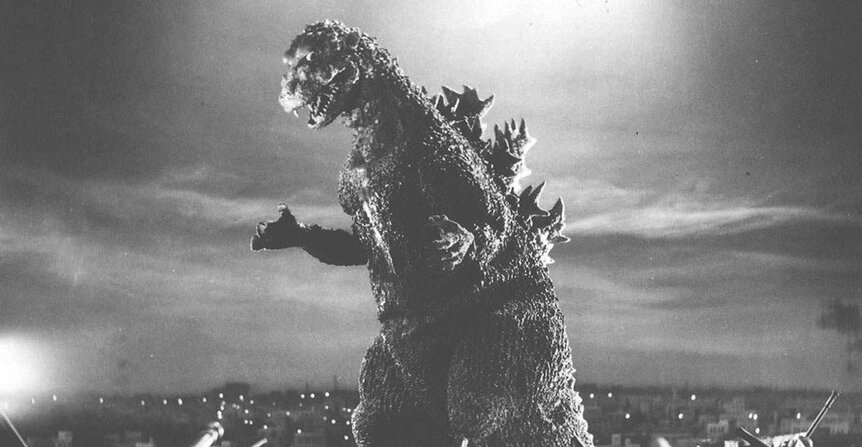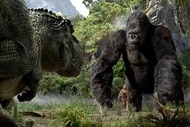Create a free profile to get unlimited access to exclusive videos, sweepstakes, and more!
Lost in the '90s: Struggling to find Asian American representation when there was none

When you’re a kid, you can’t explain why you like something. Not really anyway. The best most kids can do is nebulously describe something as "cool." But looking back, I notice that many of my favorite movies, shows, and characters were directly tied to Asian culture. No one at school ever let me forget that I was Asian, so I needed to find the value in that.
The '90s were a magical time wherein the seeds of mainstream nerd culture started to grow (Batman: The Animated Series, Game Boys, Keanu Reeves), but in retrospect, that time period grades out very poorly in Asian American representation. Asians weren’t invisible, but the more successful characters were often regulated to tired tropes like Mr. Miyagi — the old, exotic master — or Jackie Chan — the goofy foreigner who’s good at martial arts. The not-so-lucky Asian actors were relegated to sidekicks or background characters: Dante Basco’s Rufio, Thuy Trang’s Trini of the Power Rangers, and Jubilee of the X-Men.
I wanted someone like me to be the hero of their own story; I couldn’t find any, so I improvised. I searched through American comic books and international Asian icons alike, but eventually found my kindred spirits in a first-generation family of goofballs hidden in the sewers of New York City.
I NEED A HERO
The easiest place to start was with a famous '90s staple: Saturday morning cartoons.
There is maybe nothing more '90s than the X-Men animated series. Back then, the X-men were untouchable. They were the premier superhero team. The now-blockbusting Avengers were a second rate squad; the X-Men were the A-team. At the forefront of the X-men explosion of popularity was Wolverine. Yellow-clad and steel-clawed, the Wolverine was a berserker bad boy, the toughest on a team packed with toughness. In 2000, Wolverine got hijacked by Hugh Jackman (Highjackmanned? Hughjacked?), a tall and handsome actor from Australia. Prior to the film’s release, Logan was portrayed as a stout man with broad shoulders, dark hair, and sharp eyes.
Growing up, I was average height for my age. However, my dad tapped out at 5'4" (with shoes on). I knew I could never measure up to the Herculean standard of heroes like Cyclops or Captain America; I knew that if I were ever to look like a superhero it would be someone like Wolverine. My dad had broad shoulders, dark hair, and sharp eyes! Maybe I would someday, too! I secretly hoped that the 2000 X-Men film would cast an Asian actor as an homage to Wolverine’s most famous comic book run, a limited series set in Japan. But no dice. The 1982 comic Wolverine, created by Chris Claremont and Frank Miller, would later be adapted into film with James Mangold’s The Wolverine (2013), the gist of that story being: "Wolverine goes around killing ninjas." Even after 31 years, the perception of Asian American culture remained stagnant, even in a fictional world.
I learned the hard way that American comics did not care for Asian leads, only for Asian backdrops. Wolverine would never be an Asian American representative. He instead joins the ranks of superheroes like Iron Fist, Daredevil, and Batman: Asian-trained, white heroes who beat up on Asian bad guys. There seems to be too much allure in elevating the white hero atop the Asian arts.
Over the years, my love for superheroes never wavered, but in my heart, I knew that Wolverine was just another white man in Asian clothes. American pop culture proved to be a revolving door of disappointment, so I turned to Asian entertainment.
LONG LIVE THE KING (OF MONSTERS)
The often imitated but never duplicated Godzilla is the most recognizable movie monster ever. He is the undisputed king of the monsters, an apex predator of the highest degree. Godzilla is maybe Japan’s most notable pop culture contribution, challenged only by the mega-franchise that is Pokémon. To separate Godzilla from his Japanese origins is an exercise in appropriation, as the monster’s creation — both on and off-screen — is a direct response to the nuclear warfare that haunts Japan’s past. He was created as an allegory for the Hiroshima and Nagasaki bombings: a nuclear-powered monster capable of devastating violence. Japanese cinema takes great pride in Godzilla’s might both as friend and foe, and he’s conquered monsters and machinery alike in 36 movies over the years.
In other words: Godzilla kicks ass.
When the American movie monster craze blew up in the '90s with Steven Spielberg’s Jurassic Park, my local video rental store, naturally, took advantage of this boom and stocked up on classic Godzilla VHS tapes. I was hooked. My favorite, Destroy All Monsters (1968), was a simple but ambitious classic: Godzilla and other kaiju are put under mind control by malevolent aliens. The Japanese government must find a way to free Godzilla from his bonds before the aliens unleash King Ghidorah and conquer the world.
Godzilla’s popularity transcended cultural boundaries and his status as the G.O.A.T. was never challenged by my non-Asian peers. Nobody made fun of Godzilla for being the product of Asian imagination and creativity, and I took that to heart. Despite being a 400-foot-tall monster, Godzilla evolved from hindrance to hero and occasionally he was even portrayed as jovial. Godzilla movies went from serious dramas to kid-friendly adventures. When the announcement of an American Godzilla film made the news, I hoped to have a monster that represented the cross-cultural conundrum that I found myself in. Finally, a potential Asian American experience brought to the big screen, a blockbuster that would bring it all home for me.
Imagine my disappointment when the film finally released in 1998. Roland Emmerich’s Godzilla was a strange, white-washed affair — the lone non-white named character is played by Hank Azaria — that featured Matthew Broderick, Jean Reno, and a mutated iguana. The film was set in New York City, erased all of Godzilla’s Japanese identity, and didn’t capture the spirit that made his past films successful. Normally, a character like Godzilla was a great example of Asian excellence, but it was important for me to find myself in American pop culture. I wanted to find the meeting point between the two.
TURTLE POWER
And so I went American-made. The Teenage Mutant Ninja Turtles are, arguably, one of the most notable geek touchstones in the American mythos, the product of a couple of New England guys, Peter Laird and Kevin Eastman, who first dreamed them up in 1984. The TMNT consist of four turtle brothers who are transformed by the effects of a mutagenic "ooze." These turtles are raised by their sensei and adoptive father, Splinter, a rat that was also transformed by the ooze. Splinter and the boys live in an underground lair hidden within the sewers of New York City.
Despite the absurd premise, the world just can’t seem to quit the Turtles. Every generation falls in love with their own variation, mine being the 1990 live-action film.
I was drawn to the Turtles in the same way I was drawn to most things in my youth: by way of martial arts. Being East Asian in America meant being assigned certain stereotypes, and I decided that steering into the skid of kung fu jokes was easier than fighting it. I practiced martial arts for nine years and immersed myself in that culture — a product, in retrospect, of American entertainment in the '90s being so poor in its understanding of Asian culture that being Asian became synonymous with knowing martial arts. As a result, Ninja Turtle weapons like nunchaku and samurai swords became definitive symbols of Asia rather than just part of their martial arts.
The Turtles’ use of ninjutsu and Japanese weaponry can be seen as an appropriation of Asian culture. Instead, I like to look at their background as a unique, maybe unintentional, retelling of the Asian American experience.
The Turtles are technically sons of a Japanese immigrant; Splinter immigrated to the U.S. with his master Hamato Yoshi back when he was a pre-ooze pet rat. Splinter was a strict father who raised his sons to know the traditions of his homeland. Because of their adoptive father’s influence, I’d argue that the Ninja Turtles are true third-culture kids and first-generation Americans; they don’t fully understand their father’s Japanese lifestyle nor can they feel at home in the world they live in. The four of them live and experience a unique culture unto themselves made from the remnants of their Asian upbringing and NYC surroundings. (There’s the whole mutant turtle thing too, but that’s beside the point.)
The TMNT lived through the same type of cross-cultural experience and discrimination I wrestled with my whole life. They were a funhouse mirror of representation; just swap out green scales and turtle shells with Asian features.
The '90s are long gone, but Asian American representation hasn’t gotten much better. The biggest names in pop culture still put white faces to Asian stories. Just look at Scarlett Johansson’s Major Kusanagi in Ghost in the Shell and Tilda Swinton’s The Ancient One in Doctor Strange. One day, though, hopefully soon, Asian American kids will be able to see themselves in people and not mutated reptiles.
The views and opinions expressed in this article are the author's, and do not necessarily reflect those of SYFY WIRE, SYFY, or NBC Universal.




























